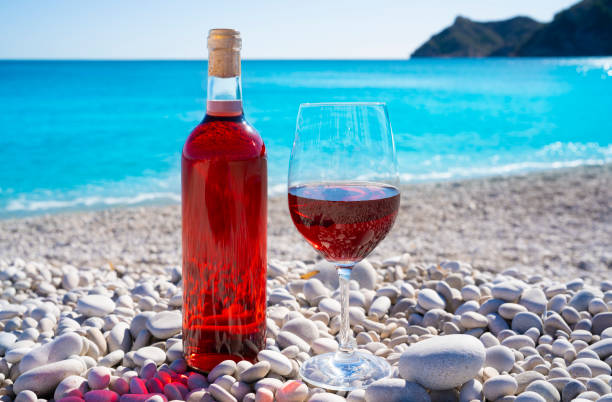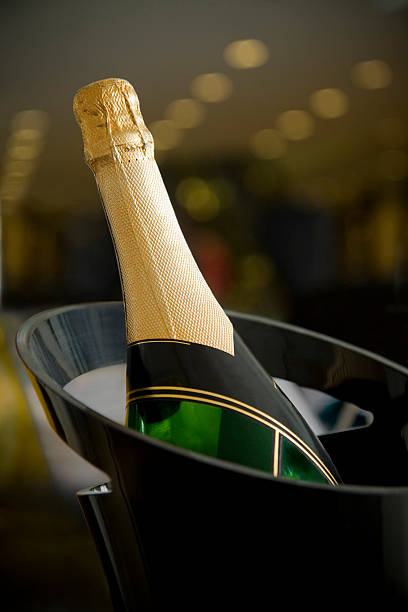Wine is often seen as a cultural and authentic product by consumers. They see wine as different from other commercially produced goods.
We think of wine as an agricultural product that is linked to a specific place and, in some cases, to a particular producer. Then, it’s a product with a history rooted in a specific region. Finally, wine is treated like an artistic product with key consumers, terminology, prominent producers, and media attention.
What makes wine so special?
The market value for global wine will be over $53 billion in 2021. Global production is around 260 million hectolitres or 34 billion bottles. About half of this is exported and consumed outside the place of origin. The major producing countries are Italy, France, Spain, the United States, and Australia.
Wine has been commercialized for over 3,000 years. Many of the cultural concepts that shape our perceptions of wine today are rooted in its past as a product for sale.
As an anthropologist at the Department of Social and Public Communication, Universite du Quebec a Montreal UQAM (UQAM), I see wine as a cultural object. Wine is a cultural object that has meanings that are socially constructed, and both consumers and producers think about it subconsciously.
In 2000-2001, I conducted my first anthropological fieldwork in Calabria in southern Italy. Since then, I have been back three times. In 2017-2018, I completed my second anthropological research in British Columbia in the Okanagan Valley. Later, I will share some of the findings of this research in The Conversation.
Since 2010, I have run the website sommeliervirtuel.com along with my brother Mathieu. We have gained recognition as wine influencers and have deepened my knowledge of the Quebec wine market.
This first article demonstrates how our cultural conceptions about wine are actually a result of its commercial nature.
Place is important
Wine is a product of place. It is possible to talk about a Bordeaux or Burgundy without needing to mention that it’s wine. As far back as Ancient Greece and the Middle Ages, it was different elites who created a market for wine from distant, recognized regions.
, a common agricultural commodity, among others, was also considered to be the wine produced and consumed in the locality.
The origin of wine became significant through the trade of wines, particularly over long distances.
The reality of trade versus the utopia of terroir
The trade also explains why wine production is concentrated in some regions and not in others.
Official speeches (guidebooks and wine books) state that the concentration of wine production in certain regions is due to the quality of its terroir. This is based on the notion that the best places for producing quality wine are located there. Trade explains why vineyards are concentrated in some regions but not others.
French historian and geographer Roger Dion has demonstrated how France’s position as a leader in the market of northern Europe led to a concentration of wine production. He explains how wine-producing areas were concentrated around rivers that were vital for transporting heavy cargo prior to the arrival of trains.
It was France’s geographic position that explained the historical development and renown of France’s wine regions.
In the past, wine-producing regions were able to sell their products in other markets. This is because a family of peasants could not survive on wine. This is because the utopic concept called terroir has been used in order to hide these origins. It is attributed to regions and nature, while historically, their reputations have actually been built by trade.
From agricultural products to luxury products
As wine consumption grew in countries that were not wine producers, like England, Northern Europe, and America, an entirely new concept of wine was born.
In these markets, wine was not a product of agriculture. Wine was considered a luxury item, only available to certain social groups. Even after wine became more common, it was still a rare product.
Even in wine-producing countries, the daily consumption of wine has been replaced by an occasional one.
Bordeaux and the English Market
Bordeaux is a good example, and it has had a major influence on the modern notions of wine.
Bordeaux’s vineyard was developed to meet the demands of the English and Dutch markets, which controlled the region, its trade, and the wine industry in the 17 century. The English market was responsible for causing consumers and merchants alike to pay attention to the Crus and vintages of Bordeaux.
At the Universal Exhibition in Paris, the famous classification for Bordeaux wines from 1855 was developed on the basis of the English market’s wine prices.
As new markets emerge, especially in Asia, prices are now being driven up for specific wines. China is also producing and exporting its wine. This increases the competition between the different wine-producing regions in the world.
In Asian markets, wine is still a luxury product. It’s often given as a present, such as in Japan. The Asian markets may influence our perceptions of wine over the next few years if they have not already.
Here are a few examples that show how the commercial nature and long history of wine have influenced the way we perceive the product. Could wine be hiding its true nature under the rhetoric of authenticity? Wine is a fermented grape juice.




